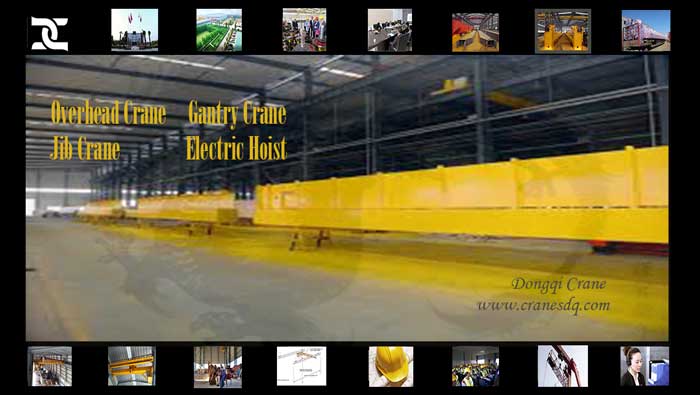Overhead crane machine as one of the most frequently use material handling system are widely used in various industries. Due to the main part of the overhead crane system is made of steel which is prone to rust in almost any environment, especially when used for caustic applications or if exposed to harsh conditions, the overhead crane and crane system uses crane protective and paint finishes to prolong the working life of overhead crane.
To protect your overhead crane system from rust and corrosion, most manufacturers provide options for crane protective coatings and. Knowing which crane protective coating will best suit your operation is important to extend the lifetime of your new crane system. Here, we will explore several crane protective coating and paint finish options for overhead crane systems, and outline the advantages and recommended applications for each.

Main paint classifications
There are three main paint classifications: primers, intermediates, and finish coats.
- Primers are used to wet and adhere to the substrate (the steel surface or underlying metal) and act as an inhibitor to hinder corrosion.
- Intermediates are used to build film thickness.
- Finish coat offers aesthetic value, but it also provides surface resistance.
Depending on the conditions of exposure, it must act as the first line of defense against weather and sunlight, open exposure and condensation.
Crane metal protective coatings
There are also four types of crane protective coatings for metal: barrier, inhibitive, sacrificial, and combination.
- Barrier coatings protect metal by preventing water, oxygen, and electrolyte from coming in contact with the underlying metal.
- nhibitive coatings contain chemicals that hinder corrosion. They react with the cathode, anode, or other components (oxygen, electrolyte, acid).
- Sacrificial coatings provide galvanic protection. In other words, they corrode (sacrifice) instead of the underlying metal, providing electrons, which reverses the corrosion cell and transforms anodes to cathodes.
- Combination.
Two-compeonet epoxy
There are tons of protective finishes on the market, but epoxy coating is the system of choice in many critical industrial coating applications. Two part epoxy coatings were developed for heavy-duty service on metal like steel and iron, but they use less energy than heat-cured powder coatings. The epoxy is called “two-part” because it is comprised of a primer and a finish coat and is designed to protect metal substrates from oxidization and corrosion.
The epoxy finish is extremely hard and resistant to friction. It also provides optimum protection against particle abrasion, corrosive fluids, turbulence, heat, cold, and impact forces. Epoxy is resistant to diluted acids, alkalis, petroleum products, and condensation.
Two component epoxy coat systems are most useful for cast steel and cast aluminum applications, and their low volatility reduces exposure and flammability issues that are usually associated with solvent-borne coatings. Epoxy is most often used for industrial and automotive applications, due to their heat resistant properties. UV exposure can cause epoxy coatings to deteriorate over time.
Key Industrial Applications: construction, manufacturing applications, power plant applications, machinery, pumps and compressors, farm equipment, and oil and gas pipelines.
Hot dip galvanizing
If UV exposure is a major concern, or if you are permanently installing a system near salt water or for an extremely corrosive application, galvanized steel is reliable and extremely effective. In the galvanizing process, steel is coated with Zinc to protect it from corrosion. Hot dip galvanizing provides thick, durable corrosion protection, and it can be applied rapidly—offsite and under controlled conditions.
Another benefit to using galvanized steel is that it is achieved using naturally occurring zinc alloys. The zinc coating serves as a sacrificial anode, which corrodes instead of the underlying metal. This corrosion provides electrons that reverse the corrosion cell and transform anodes to cathodes.
In addition, galvanized steel products last for decades and are completely recyclable. They are durable, corrosion resistant, and protect against abrasion, corrosive fluids, turbulence, heat, cold, and impact forces. Galvanized steel provides complete coverage and promises longevity in salt-water applications and caustic environments.
Key Industrial Applications: marine applications, manufacturing applications, off-shore platforms, water treatment plants, solar projects, pumps and compressors, farm equipment, oil and gas pipelines, architectural applications, and pulp and paper mills.
Power coating
Powder coating involves the application of a dry powdered paint compound made of pigments, specialized resins, and fillers that melt and fuse together during the curing process to form a painted finish. The solid powder particles are electrostatically charged using a low-velocity air powered spray gun. This electrostatic charge attracts paint particles to the substrate surface and holds them in place during the high temperature curing process. Conventional liquid paint requires a solvent to keep the binder and filler parts in a liquid suspension form. But, dry powder is applied electrostatically and cured under heat to allow it to form a protective barrier around the metal substrate. The powder is usually used to create a hard finish that is tougher than conventional paint.
Powder coating can be relatively expensive, but it is high impact resistant, which means that it eliminates chipping and scratching. It is most commonly used for applications that involve impact and particle abrasion, and it extends the life of your crane in caustic environments.
Powder coating does offer the added benefit of decorative variety because it comes in standard or custom colors. It also comes in various textures including smooth, wrinkled, matte, and rough. Powder coating systems are resistant to heat, corrosion, impact, abrasion, most chemicals, and solvents. They are also resistant to fading from sunlight and UV exposure.
Powder coating is environmentally friendly because it doesn’t contain volatile organic compounds (VOC's), which are pollutants found in the solvents used in liquid crane paint finishes. They eliminate the need for users to buy and maintain costly pollution control equipment, which saves money in the long run.
Crane Protective Coatings and Paint Finishes Types and Applications
没有评论:
发表评论